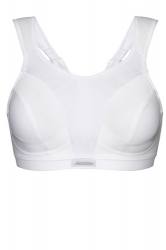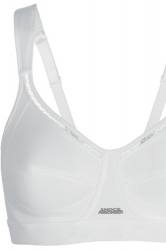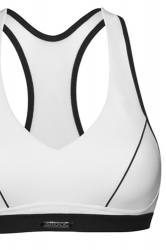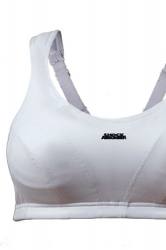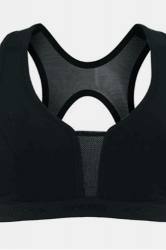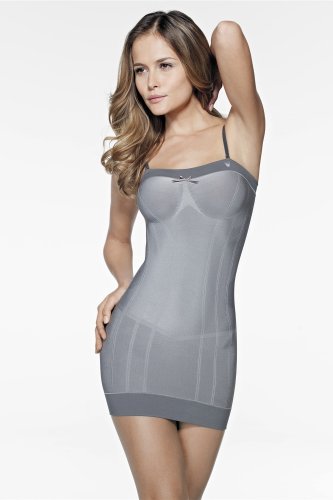| |
پنج شنبه 15 ارديبهشت 1390برچسب:عشق, عکس, :: 20:45 :: نويسنده : فردین
| ۸ روش برای ابراز عشق به شوهرتان |
|
|
| |
| |
زنان و مردان عشق را به روشهای گوناگونی تجربه می کنند. بیشتر افراد از این مسئله آگاهی ندارند، به طوری که در زندگیشان متحمل سختی های زیادی می شوند و از این رو آنها برای ابراز عشق خود به جنس مخالف تلاش می کنند تا همانطور که خودشان دوست دارند، به همان شکلی که به آن می اندیشند و بدون توجه به اینکه دیگران چه عقایدی در مورد آن دارند، آن را ابراز کنند. |
|
| |
| |
|
|
|
| |
| |
|
| |
| |
| |
|
| |
|
زنان و مردان عشق را به روشهای گوناگونی تجربه می کنند. بیشتر افراد از این مسئله آگاهی ندارند، به طوری که در زندگیشان متحمل سختی های زیادی می شوند و از این رو آنها برای ابراز عشق خود به جنس مخالف تلاش می کنند تا همانطور که خودشان دوست دارند، به همان شکلی که به آن می اندیشند و بدون توجه به اینکه دیگران چه عقایدی در مورد آن دارند، آن را ابراز کنند.
مسائل اساسی برای ایجاد احساس عشق وجود دارد که، بدون در نظر گرفتن جنسیت، تقریبا در بین همه افراد به طور یکسان تقسیم شده است و آگاهی از آن ضروری و لازم است. این مسائل شامل مواردی همچون زمان با هم بودن، برقراری رابطه ای هیجان انگیز و مسائلی از این دست می باشد. این نوع مسائل ارزش خاص خودشان را دارند. پس در این متن به موضوعاتی روی آورده شده که یا درباره مسائل خاص زنان با همسرانشان است و یا حداقل مواردی که تاکید بیشتری به آن شده است.
با مطالعه این مطلب، زنان متوجه خواهند شد که، مردها مانند آنها تنها با بیان یک جمله «دوستت دارم» احساس عاشقی نمی کنند. این به معنای آن نیست که ما نباید این جمله را به آنها بگوییم، بلکه شما می توانید نسبت به آن بی خیال باشید. بیشتر مردها تا زمانی که واقعا احساس نکنند شخص مقابل را دوست دارند، عشق خود را بیان نمی کنند. بیشتر آنها حتی متوجه نمی شوند که چه چیز آنها را می آزارد و فقط می دانند که خوشحال نیستند و احتمال دارد به این رابطه وابسته شوند اما قادر به بیان مفهوم استواری که همان حس عاشقی است، نمی باشند.
اگر مردها نیازهای خود را برای این که احساس کنند کسی را دوست دارند، بدانند، مسائل پایه ای برای آنها قابل درک می شود و این برای همه مردان امری یکسان است. شاید افراد کمی در گوشه و کنار وجود داشته باشند که یکی از موارد زیر برای آنها غیرکاربردی باشد، یا تعدادی هم وجود داشته باشند که موارد مهم دیگری را به آن بیافزایند. اگر شما هم یکی از آن مردهایی هستید که این مطلب را می خوانید، لطفا موارد کاربرد آن را به فهرستتان اضافه کنید. اگر چه این لیست بیشتر مسائل اصلی را برای اکثر افراد دربر می گیرد.
در آنجا برخی روشهای بنیادی که خانمها برای بیان دوست داشتن خود به همسرشان می توانند استفاده کنند، بیان شده است.
۱) احترام
موثرترین روش برای این که مردی احساس کند همسرش او را دوست ندارد، بی احترامی به او، به خصوص بی حرمتی در جمع، می باشد. اگر نمی خواهید به همسرتان اهمیت بدهید و حس دوست داشتن را در او بوجود آورید، او را در مقابل دیگران مورد تمسخر قرار نداده، با او مخالفت نکنید و جواب او را ندهید. انجام این کارها هنگامی که با هم تنها هستید مشکل عمده ای ایجاد نمی کند (البته به شما توصیه می کنیم از این روشها استفاده نکنید و راههای بهتری برای بیان پیام خود بیایند)، اما در جمع دیگران با این که به خوبی قادر به سیلی زدن به صورت او هستید، اما انجام چنین کاری او را دلسرد خواهد کرد.
۲) تحسین و تمجید
این مورد به نوعی به مورد اول مربوط است، اما از دیدگاهی دیگر. احترام گذاشتن بیشتر در مورد پرهیز از بی حرمتی نسبت به آشکار جلوه دادن احترام است. یعنی بیشتر سعی کنید تا به یکدیگر بی احترامی نکنید. از سوی دیگر، می توانید با رفتار و گفتار خود، آنچه را که در مورد او می پسندید به روشنی بیان کنید و از او تعریف کنید. به این کار زبان بدن می گویند. به طور مثال، وقتی از ظاهر او خوشتان می آید، نگاهی با افتخار به او بیندازید، یا می توانید با یک جمله زیبا به او بگویید که شوخ طبعی او را بسیار دوست دارید. همواره باید اطمینان داشته باشید که کاری که انجام می دهید مطابق با شرایط باشد. به طور نمونه، بیان دوست داشتن طبع شوخ او در هنگام حضور شما در مراسم ترحیم پدرش، مطمئنا ایده خوبی نیست.
همچنین شما باید متنوع عمل کنید. یافتن نکات تازه و کوچک یا چیزهایی که کمتر استفاده شده اند، برای بیان عشق خود بر مبنای قاعده ای منصفانه، امری پسندیده و کاربردی است. وقتی او کاری انجام می دهد که شما آن را می پسندید، بی درنگ به او بگویید. مثلا وقتی برمی گردد و درب ماشین را برای شما باز می کند و شما خوشتان می آید، به او بگویید. شنیدن مکرر جملات مشابه، باعث می شود تا قدرت اولیه آن از دست برود. زمانی که او حقیقتا شما را باور نکند، به این فکر می افتد که شما با گفتن این مسائل تنها می خواهید او را تحت تأثیر قرار دهید.
۳) تعریف از او طوری که بتواند استراق سمع کند
این مورد، تاثیری شگفت انگیز دارد، اما باید به ندرت و با احتیاط استفاده شود. اگر وانمود کنید که نمی دانید او آنجاست و متوجه شود که شما این کار را از روی قصد انجام داده اید، تاثیری نخواهد داشت و او قادر به درک غیرواقعی بودن آن خواهد بود. بهترین و امن ترین راه این است که به طور واقعی در جمع دیگران از او تعریف کنید و گاهی، وقتی این کار را می کنید در آن نزدیکی باشد و از دور بشنود. در واقع این تکنیک را اگر بطور آشکارا نیز انجام دهید، جواب می دهد. مثلا می توانید هنگامی که او کنارتان نشسته آشکارا به کسی بگویید: «همسر من مردی فوق العاده است. او فلان کار را برایم انجام داده است.» با این عمل شما او را مورد احترام و ستایش قرار خواهید داد.
۴) رها کردن همه چیز
این نکته کوچکی است که تاثیراتی عظیم دارد. یکی از تاثیرگذارترین روشهای نشان دادن عشقتان به دیگران، دادن بیشترین اولویت به آنهاست. در جای خود همه کارهایی که در حال انجام آن بودید را کنار بگذارید و به آنها توجه کنید. به عنوان نمونه، از کامپیوتر دور شوید و بگذارید کودکتان خودش با آن بازی کند، تلویزیون را خاموش کرده، آشپزی و هر کاری که در حال انجام آن بودید را متوقف کرده، به سوی آن شخص بروید و به طور خاصی به او نشان دهید که در حال حاضر همه حواستان به اوست. وقتی که شما پس یک دوری، برای اولین بار به او نگاه می کنید (مثلا وقتی از سر کار به خانه بازمی گردید) تاثیر خاصی بر او دارد.
۵) توجه به نقاط قوت
این مطلب نیز شبیه تحسین کردن است اما مخصوص نقاط قوت او می باشد. برای نمونه، اگر باز کردن درب شیشه ای برایتان کمی سخت است و می دانید که او می تواند این کار را برایتان انجام دهد، با گفتن جمله ای چون «نمی توانم درب را باز کنم. می شود. این کار را برایم انجام دهی؟» درخواست خود را بیان کنید. یا اگر او در ریاضیات مهارت دارد، از او بخواهید تا قیمت چیزی را به ازای یک کیلوی آن حساب کند و به او بگویید که حساب کردن آن برایتان دشوار است. دورغ نگویید چون او به سرعت متوجه می شود. در مواردی از او درخواست کنید که می دانید نقطه قوت او نقطه ضعف شما را کامل می کند. به عنوان تذکر، این کمک می تواند فیزیکی یا ذهنی باشد.
«میشه اینو برام جابه جا کنی! آخه من نمی تونم.» یا «میشه در حل این مسئله کمکم کنی!» درست همانند تحسین کردن، بیش از حد به کار بردن این نکته در حوزه نیز، منجر به کاهش اثربخشی آن می گردد و سرانجام تبدیل به امری آزاردهنده می شود تا امری تکمیل کننده.
۶) چشم پوشی از نقاط ضعف
همسر شما هم دارای نقطه ضعف هایی است که همه مردها و زنها از این باب یکسانند. از نقطه ضعفهای او بر علیه اش استفاده نکنید. اگر سعی دارید از آنها برای آزار دادن او استفاده کنید یا آنها را از روی قصد بزرگتر جلوه دهید، او کاملا احساس خواهد کرد که مورد بی احترامی واقع شده است. شما این کار را برای خودنمایی در جاهایی که حس می کنید به طور قابل ملاحظه ای نسبت به او قوی تر هستید، برای نشان دادن عدم نیازش به کامل بودن و عدم توانایی او در انجام کارها و به علاوه، بی اهمیت جلوه دادن مرد بودن او تصدیق نداشتن استعدادی خاص همانند خواندن در جایی که لازم است، انجام می دهید.
۷) مقایسه نکردن
یکی از بدترین کارهایی که یک زن در برابر همسر خود می تواند انجام دهد، مقایسه او با شخصی دیگر است. چنین عملی حتی اگر بهتر بودن همسر خود را در برخی موارد هم بیان کنید، بسیار ناپسند است. مردها در این موارد متوجه خواهند شد که شما آن شخصی نیستید که او را دوستش دارید. این عمل شما باعث نمی شود تا او هوشیاری و آگاهی خود را به دست آورد. اگر همسرتان را حتی به طور ناچیزی با دیگران مقایسه کنید، از این لحاظ که در موردی مهارت ندارد، آن گاه این مسئله ناخودآگاه بزرگ می شود. شما به او بی احترامی کرده، نقاط ضعف او را نمایان ساخته اید و از همه مهمتر این که شما به او یادآور شده اید که او را دوست ندارید. تنها نتیجه این کار به وجود آمدن احساسات منفی و خراب شدن ارتباط او با شماست.
۸) سرزنش به خاطر یک گناه
در فیلم ها و نمایش های تلویزیونی بی شماری به تصویر کشیده شده است که زنی آن قدر شوهرش را به دلیل کاری سرزنش می کند تا اینکه مرد آنچه که زن خواهان آن می باشد را انجام می دهد. تحت تاثیر قرار دادن کسی به این روش ایده جالبی نیست. تاثیرگذاری ناشیانه همواره کار ناشایستی می باشد، از این جهت که برای هر دو طرف، هم کسی که تحت تاثیر قرار گرفته و هم کسی که این کار را انجام می دهد کار بدی است.
شخصی که تحت تاثیر قرار گرفته، در معنا، کسی است که احساس می کند قدرت تصمیم گیری خود را از دیگری می گیرد. اگر شما هم چنین حسی دارید که البته این انتخاب خود شما می باشد، پس شما هم به نوعی تحت تاثیر حرفهای دیگران قرار گرفته اید. اما اگر کاملا دوست دارید خودتان چیزی را انتخاب کنید، بدان معنا نیست که کسی در تلاش برای تاثیرگذاری بر روی شما نیست، بلکه هنوز موفق به این کار نشده اند. کسی که تلاش می شود از او سلب انتخاب گردد، از این عمل بسیار خشمگین خواهد شد.
یکی از قدرتمندترین فاکتورهای انگیزه در زندگی بشری، میل به آزاد بودن است که برای اثبات آن می توان از قدرت تصمیم گیری و اهمیت آن نام برد. وقتی که این خواسته باعث ایجاد مشکلاتی می شود، در معرض خطر قرار خواهید گرفت. اگر فردی که شما با صحبتهای خود او را تحت تاثیر قرار داده اید، حتی بعدها و پس از انجام آن، متوجه آن گردد، از شما خواهد رنجید. از اینرو، در مورد همسر شما، به طور حتم رنجشی رخ می دهد که حتی اگر به تدریج هم از بین برود، او تا آخر عمر در این باره فکر می کند. ممکن است خیلی ناچیز باشد. شاید آن قدر کوچک باشد که از روی قصد به آن بهایی ندهد، اما با تمام مسائل این ها چیزهایی هستند که نمی شود آنها را انکار کرد.
تاثیرگذاری روی افراد، برای شخصی هم که تحت تاثیر قرار می دهد، بد است. وقتی سعی می کنید روی کسی تاثیر بگذارید، شما در تلاش هستید تا قسمتی از کیفیت انسان بودن او را سلب کنید. همان طور که در قسمت بالا اشاره شد، آنها از این عمل رنجیده شده و معمولا رنجش مساوی با یک تلاش ناموفق است. شما با این کار خود عقاید شخصی همسرتان را به عنوان یک فرد آزاد که می تواند عقاید خود را داشته باشد، از بین برده و در عوض او را تبدیل به یک جسم خواهید کرد. اجسام با توجه به نوع ورودی آنها، می توانند محصولات مشابهی داشته باشند. با این روش، کیفیت انسانی، قدرت انتخاب شخصی، احترام گذاردن و عشق به دیگران از تفکر انسان ربوده می شود.
شاید وقتی این متن را می خوانید، برخی چیزها با آنچه که در ذهنتان دارید، مطابقت نکند.
این ۸ روشی بود که با کمک آن می توانید به همسرتان ابراز محبت کنید. برخی از آنها به طور فعالانه و ناخودآگاه انجام می گیرد. اما برخی دیگر به طور قطع به خودی خود انجام نمی پذیرند. اما وقتی که همه آنها را در کنار یکدیگر قرار دهید، و با تمام چیزهایی که نیاز دارید تا احساس عشق کنید در کنار هم بگذارید، همسرتان درک خواهد کرد و حس می کند که شما چقدر عاشق او هستید.
|
|
|
|
|
|
|
| |
| |
| |
|
|
ترجمه از فردین سلیم پور آذر |
|
پنج شنبه 8 ارديبهشت 1390برچسب:, :: 19:7 :: نويسنده : فردین
پنج شنبه 8 ارديبهشت 1390برچسب:, :: 18:54 :: نويسنده : فردین
پنج شنبه 8 ارديبهشت 1390برچسب:, :: 18:53 :: نويسنده : فردین
سه شنبه 6 ارديبهشت 1390برچسب:, :: 19:32 :: نويسنده : فردین
سه شنبه 6 ارديبهشت 1390برچسب:, :: 19:26 :: نويسنده : فردین
سه شنبه 6 ارديبهشت 1390برچسب:, :: 19:16 :: نويسنده : فردین
VGA to RCA and S-Video Converter Box for PC to TV Connection
Converter Main Features:
Computer video signal to S-Video or component video(TV)
Split video signal to both LCD computer monitor and TV
Operating system independent - works with all Windows, Mac, or Linux computers
Video adjustment controls on converter box for ease of picture adjustment
Converter Input:
- 1 x VGA cable IN
Converter Outputs:
- 1 x VGA cable OUT
- 1 x S-video OUT
- 1 x Component cable out (RCA yellow)
On Board Buttons:
- S-Video Switch ON/Off
- PAL/NTSC
- Menu
- Zoom
- UP
- Down
- Right
- Left
Converter Menu Options:
- Flicker, H-Position, V-Position, Brightness, Saturation, Sharpness
Video output system options: NTSC / PAL
Certification: FCC, CE
VGA system options:
- 640 x 480 @ 60 / 72 / 75 / 85 Hz
- 800 x 600 @ 60/ 75 Hz
- 1024 x 768 @ 60 / 75 Hz
Certification: FCC, CE
Dimension: L:100 x W:60 x H:26 (mm)

Packing Include:
1 x VGA to RCA and S-Video Converter Box for PC to TV Connection
1 x VGA to Home Video Converter Box
1 x Users manual
1 x VGA cable
1 x USB power cable
سه شنبه 6 ارديبهشت 1390برچسب:, :: 19:9 :: نويسنده : فردین
سه شنبه 6 ارديبهشت 1390برچسب:, :: 18:43 :: نويسنده : فردین
Motherboard
From Wikipedia, the free encyclopedia
In personal computers, a motherboard is the central printed circuit board (PCB) in many modern computers and holds many of the crucial components of the system, while providing connectors for other peripherals. The motherboard is sometimes alternatively known as the mainboard, system board, or, on Apple computers, the logic board.[1] It is also sometimes casually shortened to mobo.[2]

A motherboard for a desktop personal computer
Prior to the advent of the microprocessor, a computer was usually built in a card-cage case or mainframe with components connected by a backplane consisting of a set of slots themselves connected with wires; in very old designs the wires were discrete connections between card connector pins, but printed circuit boards soon became the standard practice. The Central Processing Unit, memory and peripherals were housed on individual printed circuit boards which plugged into the backplane.
During the late 1980s and 1990s, it became economical to move an increasing number of peripheral functions onto the motherboard (see below). In the late 1980s, motherboards began to include single ICs (called Super I/O chips) capable of supporting a set of low-speed peripherals: keyboard, mouse, floppy disk drive, serial ports, and parallel ports. As of the late 1990s, many personal computer motherboards supported a full range of audio, video, storage, and networking functions without the need for any expansion cards at all; higher-end systems for 3D gaming and computer graphics typically retained only the graphics card as a separate component.
The early pioneers of motherboard manufacturing were Micronics, Mylex, AMI, DTK, Hauppauge, Orchid Technology, Elitegroup, DFI, and a number of Taiwan-based manufacturers.
The most popular computers such as the Apple II and IBM PC had published schematic diagrams and other documentation which permitted rapid reverse-engineering and third-party replacement motherboards. Usually intended for building new computers compatible with the exemplars, many motherboards offered additional performance or other features and were used to upgrade the manufacturer's original equipment.
The term mainboard is applied to devices with a single board and no additional expansions or capability. In modern terms this would include embedded systems and controlling boards in televisions, washing machines, etc. A motherboard specifically refers to a printed circuit board with expansion capability.
[edit] Overview
A motherboard, like a backplane, provides the electrical connections by which the other components of the system communicate, but unlike a backplane, it also connects the central processing unit and hosts other subsystems and devices.
A typical desktop computer has its microprocessor, main memory, and other essential components connected to the motherboard. Other components such as external storage, controllers for video display and sound, and peripheral devices may be attached to the motherboard as plug-in cards or via cables, although in modern computers it is increasingly common to integrate some of these peripherals into the motherboard itself.
An important component of a motherboard is the microprocessor's supporting chipset, which provides the supporting interfaces between the CPU and the various buses and external components. This chipset determines, to an extent, the features and capabilities of the motherboard.
Modern motherboards include, at a minimum:
- sockets (or slots) in which one or more microprocessors may be installed[3]
- slots into which the system's main memory is to be installed (typically in the form of DIMM modules containing DRAM chips)
- a chipset which forms an interface between the CPU's front-side bus, main memory, and peripheral buses
- non-volatile memory chips (usually Flash ROM in modern motherboards) containing the system's firmware or BIOS
- a clock generator which produces the system clock signal to synchronize the various components
- slots for expansion cards (these interface to the system via the buses supported by the chipset)
- power connectors, which receive electrical power from the computer power supply and distribute it to the CPU, chipset, main memory, and expansion cards.[4]
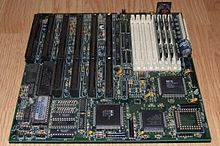
The Octek Jaguar V motherboard from 1993. [5] This board has 6 ISA slots but few onboard peripherals, as evidenced by the lack of external connectors.
Additionally, nearly all motherboards include logic and connectors to support commonly used input devices, such as PS/2 connectors for a mouse and keyboard. Early personal computers such as the Apple II or IBM PC included only this minimal peripheral support on the motherboard. Occasionally video interface hardware was also integrated into the motherboard; for example, on the Apple II and rarely on IBM-compatible computers such as the IBM PC Jr. Additional peripherals such as disk controllers and serial ports were provided as expansion cards.
Given the high thermal design power of high-speed computer CPUs and components, modern motherboards nearly always include heat sinks and mounting points for fans to dissipate excess heat.
[edit] CPU sockets
A CPU socket or slot is an electrical component that attaches to a printed circuit board (PCB) and is designed to house a CPU (also called a microprocessor). It is a special type of integrated circuit socket designed for very high pin counts. A CPU socket provides many functions, including a physical structure to support the CPU, support for a heat sink, facilitating replacement (as well as reducing cost), and most importantly, forming an electrical interface both with the CPU and the PCB. CPU sockets can most often be found in most desktop and server computers (laptops typically use surface mount CPUs), particularly those based on the Intel x86 architecture on the motherboard. A CPU socket type and motherboard chipset must support the CPU series and speed.
[edit] Integrated peripherals

Block diagram of a modern motherboard, which supports many on-board peripheral functions as well as several expansion slots.
With the steadily declining costs and size of integrated circuits, it is now possible to include support for many peripherals on the motherboard. By combining many functions on one PCB, the physical size and total cost of the system may be reduced; highly integrated motherboards are thus especially popular in small form factor and budget computers.
For example, the ECS RS485M-M,[6] a typical modern budget motherboard for computers based on AMD processors, has on-board support for a very large range of peripherals:
Expansion cards to support all of these functions would have cost hundreds of dollars even a decade ago; however, as of April 2007[update] such highly integrated motherboards are available for as little as $30 in the USA.
[edit] Peripheral card slots
A typical motherboard of 2009 will have a different number of connections depending on its standard.
A standard ATX motherboard will typically have one PCI-E 16x connection for a graphics card, two conventional PCI slots for various expansion cards, and one PCI-E 1x (which will eventually supersede PCI). A standard EATX motherboard will have one PCI-E 16x connection for a graphics card, and a varying number of PCI and PCI-E 1x slots. It can sometimes also have a PCI-E 4x slot. (This varies between brands and models.)
Some motherboards have two PCI-E 16x slots, to allow more than 2 monitors without special hardware, or use a special graphics technology called SLI (for Nvidia) and Crossfire (for ATI). These allow 2 graphics cards to be linked together, to allow better performance in intensive graphical computing tasks, such as gaming and video editing.
As of 2007, virtually all motherboards come with at least four USB ports on the rear, with at least 2 connections on the board internally for wiring additional front ports that may be built into the computer's case. Ethernet is also included. This is a standard networking cable for connecting the computer to a network or a modem. A sound chip is always included on the motherboard, to allow sound output without the need for any extra components. This allows computers to be far more multimedia-based than before. Some motherboards contain video outputs on the back panel for integrated graphics solutions (either embedded in the motherboard, or combined with the microprocessor, such as the Intel HD Graphics). A separate card may still be used.
[edit] Temperature and reliability
Motherboards are generally air cooled with heat sinks often mounted on larger chips, such as the Northbridge, in modern motherboards. If the motherboard is not cooled properly, it can cause the computer to crash. Passive cooling, or a single fan mounted on the power supply, was sufficient for many desktop computer CPUs until the late 1990s; since then, most have required CPU fans mounted on their heat sinks, due to rising clock speeds and power consumption. Most motherboards have connectors for additional case fans as well. Newer motherboards have integrated temperature sensors to detect motherboard and CPU temperatures, and controllable fan connectors which the BIOS or operating system can use to regulate fan speed. Some computers (which typically have high-performance microprocessors, large amounts of RAM, and high-performance video cards) use a water-cooling system instead of many fans.
Some small form factor computers and home theater PCs designed for quiet and energy-efficient operation boast fan-less designs. This typically requires the use of a low-power CPU, as well as careful layout of the motherboard and other components to allow for heat sink placement.
A 2003 study[7] found that some spurious computer crashes and general reliability issues, ranging from screen image distortions to I/O read/write errors, can be attributed not to software or peripheral hardware but to aging capacitors on PC motherboards. Ultimately this was shown to be the result of a faulty electrolyte formulation.[8]
- For more information on premature capacitor failure on PC motherboards, see capacitor plague.
Motherboards use electrolytic capacitors to filter the DC power distributed around the board. These capacitors age at a temperature-dependent rate, as their water based electrolytes slowly evaporate. This can lead to loss of capacitance and subsequent motherboard malfunctions due to voltage instabilities. While most capacitors are rated for 2000 hours of operation at 105 °C,[9] their expected design life roughly doubles for every 10 °C below this. At 45 °C a lifetime of 15 years can be expected. This appears reasonable for a computer motherboard. However, many manufacturers have delivered substandard capacitors,[citation needed] which significantly reduce life expectancy. Inadequate case cooling and elevated temperatures easily exacerbate this problem. It is possible, but tedious and time-consuming, to find and replace failed capacitors on PC motherboards.
[edit] Form factor

microATX form factor motherboard
Motherboards are produced in a variety of sizes and shapes called computer form factor, some of which are specific to individual computer manufacturers. However, the motherboards used in IBM-compatible to fit various case sizes. As of 2007[update], most desktop computer motherboards use one of these[which?] standard form factors—even those found in Macintosh and Sun computers, which have not traditionally been built from commodity components. The current desktop PC form factor of choice is ATX. A case's motherboard and PSU form factor must all match, though some smaller form factor motherboards of the same family will fit larger cases. For example, an ATX case will usually accommodate a microATX motherboard.
Laptop computers generally use highly integrated, miniaturized and customized motherboards. This is one of the reasons that laptop computers are difficult to upgrade and expensive to repair. Often the failure of one laptop component requires the replacement of the entire motherboard, which is usually more expensive than a desktop motherboard due to the large number of integrated components.
[edit] Bootstrapping using the BIOS
Motherboards contain some non-volatile memory to initialize the system and load an operating system from some external peripheral device. Microcomputers such as the Apple II and IBM PC used ROM chips, mounted in sockets on the motherboard. At power-up, the central processor would load its program counter with the address of the boot ROM and start executing ROM instructions, displaying system information on the screen and running memory checks, which would in turn start loading memory from an external or peripheral device (disk drive). If none is available, then the computer can perform tasks from other memory stores or display an error message, depending on the model and design of the computer and version of the BIOS.
Most modern motherboard designs use a BIOS, stored in an EEPROM chip soldered or socketed to the motherboard, to bootstrap an operating system. When power is first applied to the motherboard, the BIOS firmware tests and configures memory, circuitry, and peripherals. This Power-On Self Test (POST) may include testing some of the following devices:
On recent motherboards, the BIOS may also patch the central processor microcode if the BIOS detects that the installed CPU is one in for which errata has been published. Many of the above devices can be stored with machine code instructions to load an operating system or program.

A motherboard of a Vaio E series laptop (right)
[edit] History
یک شنبه 4 ارديبهشت 1390برچسب:, :: 17:50 :: نويسنده : فردین
June 15, 2010
In my annual letter last year, I announced that we were working with the Center for Effective Philanthropy (CEP) to survey all of our active grantees, in an effort to improve the quality of our external partnerships. Those partnerships are our lifeblood, and I said I was making it a priority for everybody at the foundation to listen more carefully to what our partners in the field have to tell us. I also promised to report back on what we found out—and on how we are responding to the feedback. That is why I am writing this letter.
I appreciate our grantee partners’ willingness to be part of this process. The GPR has taught us a great deal, and it is already helping us improve the way we work.
Before I get into the details of what we learned and how we’re responding, I want to explain a little more about the Grantee Perception Report (GPR).It’s a comprehensive survey of grantees that covers a range of issues, and because so many organizations use the GPR—it has been commissioned by nearly 200 philanthropic funders—it allows us to be benchmarked against other funders in the field.
The CEP surveyed 1,544 of our grantees, all our active grantees between June 1, 2008 and May 31, 2009. 1,020 responded, and the 66 percent response rate is typical of this survey.
Now, on to the results.
First, compared to other funders in the CEP’s comparative database, the foundation received strong ratings for our work in grantees’ fields. In particular, they said we have a positive impact on knowledge, policy, and practice in our strategy areas.
But we received lower than typical ratings on many other aspects of the grantee experience.
Many of our grantee partners said we are not clear about our goals and strategies, and they think we don’t understand their goals and strategies.
They are confused by our decision-making and grantmaking processes.
Because of staff turnovers, many of our grantee partners have had to manage multiple Program Officer transitions during the course of their grant, which creates more work.
Finally, they say we are inconsistent in our communications, and often unresponsive.
We take this feedback very seriously, because we understand that some of these barriers are preventing our partners and us from having our maximum impact.
The GPR results were the focus of many management team meetings at the beginning of the year. In the spring, we built on those high-level meetings with a foundation-wide dialogue, which helped our staff understand the results and collectively analyze what they mean to us.
Through this process, we have developed a long-term vision of success and a series of action steps to get there. We don’t see this process as a popularity contest. Even in the most productive partnerships, there is bound to be some tension. But we are absolutely committed to building relationships that will help us do our best work.
I have set a simple three year goal for us. By 2013, the foundation and our grantee partners will have stronger partnerships characterized by three things:
- First, we will understand each others’ roles, goals, and strategies
- Second, we will have open, two-way communication
- Third, they will have a clear understanding of our decision-making and grantmaking processes
To reach these goals, we identified five short–term action steps to improve our grantee partnerships immediately. Specifically, our commitments to our grantee partners in the short-term are:
- To better explain how our proposal and approval process works
- To clearly communicate the point of contact for grants
- To orient all new grantees, set expectations, and answer their questions and hear their concerns at the outset.
- To provide timely and substantive responses to all the progress reports they submit
- To open up new channels of communication, including more frequent check-in calls with program managers and conference calls that give all our grantee partners the chance to ask questions of our executives.
We are also now working on a long-term action plan to address more systemic issues that affect our relationships with our grantees. We are committed to building strong partnerships, and we realize that doing so may require fundamental changes in the way we work.
With that in mind, I am also committed to commissioning another GPR in 2013 to check on our progress toward our goals.
fardin salim pour azar
CEO
|

با عرض سلام و خسته نباشید به شما دوست عزیز که به ویلاگ این بنده سری زده اید و امید وارم که در وبلاگ من 1 مطابی رو پیدا کنی که به درد شما بخوره و بتوانی از آن استفاده مفید را انجام بدی .
با نظرات خود ما را در انجام هر چه بهتر شدن وبلاگ یاری نمایید.
شماره تماس با من 09141668615
 شمارش معکوس برای آغاز گفتگوهای ایران با 1+5 شمارش معکوس برای آغاز گفتگوهای ایران با 1+5
 خودرویی که شکل عوض می کند خودرویی که شکل عوض می کند
 ثبت نام کاردانی به کارشناسی ثبت نام کاردانی به کارشناسی
 رژه کالسکه های عجیب و جالب در کراسنودار روسیه ... رژه کالسکه های عجیب و جالب در کراسنودار روسیه ...
 :: بزرگترین سنگ دنیا ... :: بزرگترین سنگ دنیا ...
 جدیدترین لباس عروس های تیر ماه 91 جدیدترین لباس عروس های تیر ماه 91
 تصاویر دیدنی از عجیب ترین داشبورد های اتومبیل در جهان تصاویر دیدنی از عجیب ترین داشبورد های اتومبیل در جهان
 توصیه های مهم امنیتی به کاربران گوشی های هوشمند توصیه های مهم امنیتی به کاربران گوشی های هوشمند
 زیبا ترین عکس های جدید عاشقانه زیبا ترین عکس های جدید عاشقانه
 ساخت ماوس هیبریدی جدید! ساخت ماوس هیبریدی جدید!
 عکس های زیبا از دریا عکس های زیبا از دریا
 عکس ترسناکترین استخر دنیا عکس ترسناکترین استخر دنیا
 «درهای بند ما در زندان همیشه بسته است» «درهای بند ما در زندان همیشه بسته است»
 آموزش تصویری SQL Server 2008 قسمت 1 آموزش تصویری SQL Server 2008 قسمت 1
 پیامک بازی با ((یارانه دهنده محترم)) بر سر یارانه پیامک بازی با ((یارانه دهنده محترم)) بر سر یارانه
 پدیدار شدن آیات قرآن بر بدن یک نوزاد (+عکس) پدیدار شدن آیات قرآن بر بدن یک نوزاد (+عکس)
 بدن كودک تبریزی خاصیت مغناطیسی دارد (+عکس) بدن كودک تبریزی خاصیت مغناطیسی دارد (+عکس)
 ماشین از دیدگاه دختر خانوووما + تصاویر ماشین از دیدگاه دختر خانوووما + تصاویر
 بزرگترین قاتل قرن 21 +عکس بزرگترین قاتل قرن 21 +عکس
 چی میشد اگه این هالیوودی ها پشمالو بودند ؟! چی میشد اگه این هالیوودی ها پشمالو بودند ؟!
 اینم از مجلس ایران.....ببین!!!+عکس اینم از مجلس ایران.....ببین!!!+عکس
 بوسیدن فاطمه معتمد آریا توسط مجری مرد + عکس بوسیدن فاطمه معتمد آریا توسط مجری مرد + عکس
 همه چیز در مورد شب زفاف همه چیز در مورد شب زفاف
 دختر ۱۵ ساله که با ۲ ماه تن فروشی میلیونر شد + عکس دختر ۱۵ ساله که با ۲ ماه تن فروشی میلیونر شد + عکس
 شگفت انگیزترین ماهی کشور + عکس شگفت انگیزترین ماهی کشور + عکس
 بلعیدن دست مردی توسط تمساح + تصاویرباور نکردنی 18+ بلعیدن دست مردی توسط تمساح + تصاویرباور نکردنی 18+
 بوی بد دهان دلیل کشته شدن یک نو عروس 17 ساله بوی بد دهان دلیل کشته شدن یک نو عروس 17 ساله
 مراقبت یک سگ از جوجه غاز یتیم!/عکس مراقبت یک سگ از جوجه غاز یتیم!/عکس
 بازداشت دختر نیمه عریان وزیر در خانه فساد!! +عکس بازداشت دختر نیمه عریان وزیر در خانه فساد!! +عکس
 خطرناک ترین بدلکاری سال+عکس خطرناک ترین بدلکاری سال+عکس
 مردی که با جنازه زنش چندین سال همبستری میکرد+عکس مردی که با جنازه زنش چندین سال همبستری میکرد+عکس
 عکس های شخصی لیلا اوتادی در منزلش! عکس های شخصی لیلا اوتادی در منزلش!
 شركت تك رايانه شركت تك رايانه
 انلد ویروس جدید کامپیوتر انلد ویروس جدید کامپیوتر
 آموزش ساختن ویروس آموزش ساختن ویروس
 تبلت Kindle Fire به نسخه ۶٫۳ آپدیت میشود تبلت Kindle Fire به نسخه ۶٫۳ آپدیت میشود
 پرواز ۴۸ ساعته هواپیمای خورشیدی! پرواز ۴۸ ساعته هواپیمای خورشیدی!
 بی بی قصه های مجید درگذشت بی بی قصه های مجید درگذشت
 تبادل لینک هوشمند تبادل لینک هوشمند 
برای تبادل لینک ابتدا ما را با عنوان درسی و آدرس fardin.851165965.LoxBlog.ir لینک نمایید سپس مشخصات لینک خود را در زیر نوشته . در صورت وجود لینک ما در سایت شما لینکتان به طور خودکار در سایت ما قرار میگیرد.
|
|









